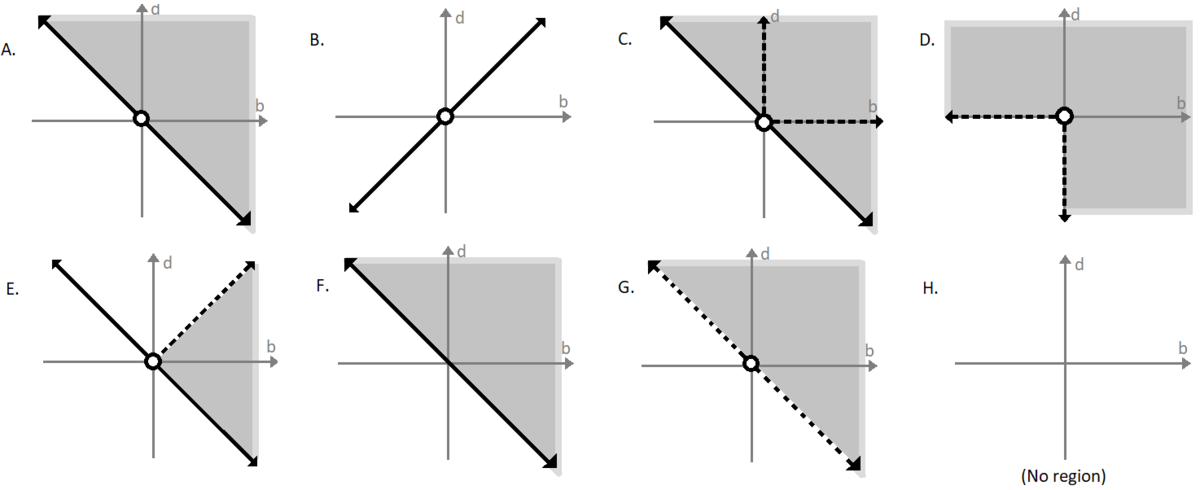Not L'Hôpital's Rule
Let and . Consider the following statement:
.
Which of the graphs below shows the region of the real plane for which there are no real values of and that would make the statement true?
Regions include shaded areas as well as solid black lines or points on the graph. Dotted lines and open circles (denoting the point at the center of the circle) are excluded from the region.

This section requires Javascript.
You are seeing this because something didn't load right. We suggest you, (a) try
refreshing the page, (b) enabling javascript if it is disabled on your browser and,
finally, (c)
loading the
non-javascript version of this page
. We're sorry about the hassle.
The statement can be expanded as follows:
x → ∞ lim [ a c + c e b x + a e d x + e ( b + d ) x ] = x → ∞ lim b d e ( b + d ) x .
The behavior of each exponential term can be separated into three categories of the coefficient in the exponent:
There are two ways to have no solution to the statement of interest:
In the first case, we cannot simply check whether a term goes to ± ∞ because it could be canceled out by another term. In the second case, we cannot simply check whether the limits are finite because we still have to solve the equation. Therefore, we have to check every case of positive, negative, and zero. Specifically, we have to check cases for each of the exponential coefficients b , d , and their sum b + d , whose sign is undetermined if b and d have opposite sign. In each case, we must determine the conditions under which there can be a solution. If the conditions do not conflict, then there is a solution in that case. For convenience, the conditions can be placed in the following categories:
Here is the analysis of each case:
The final answer is the union of cases of +/-/0 in which there is no solution: